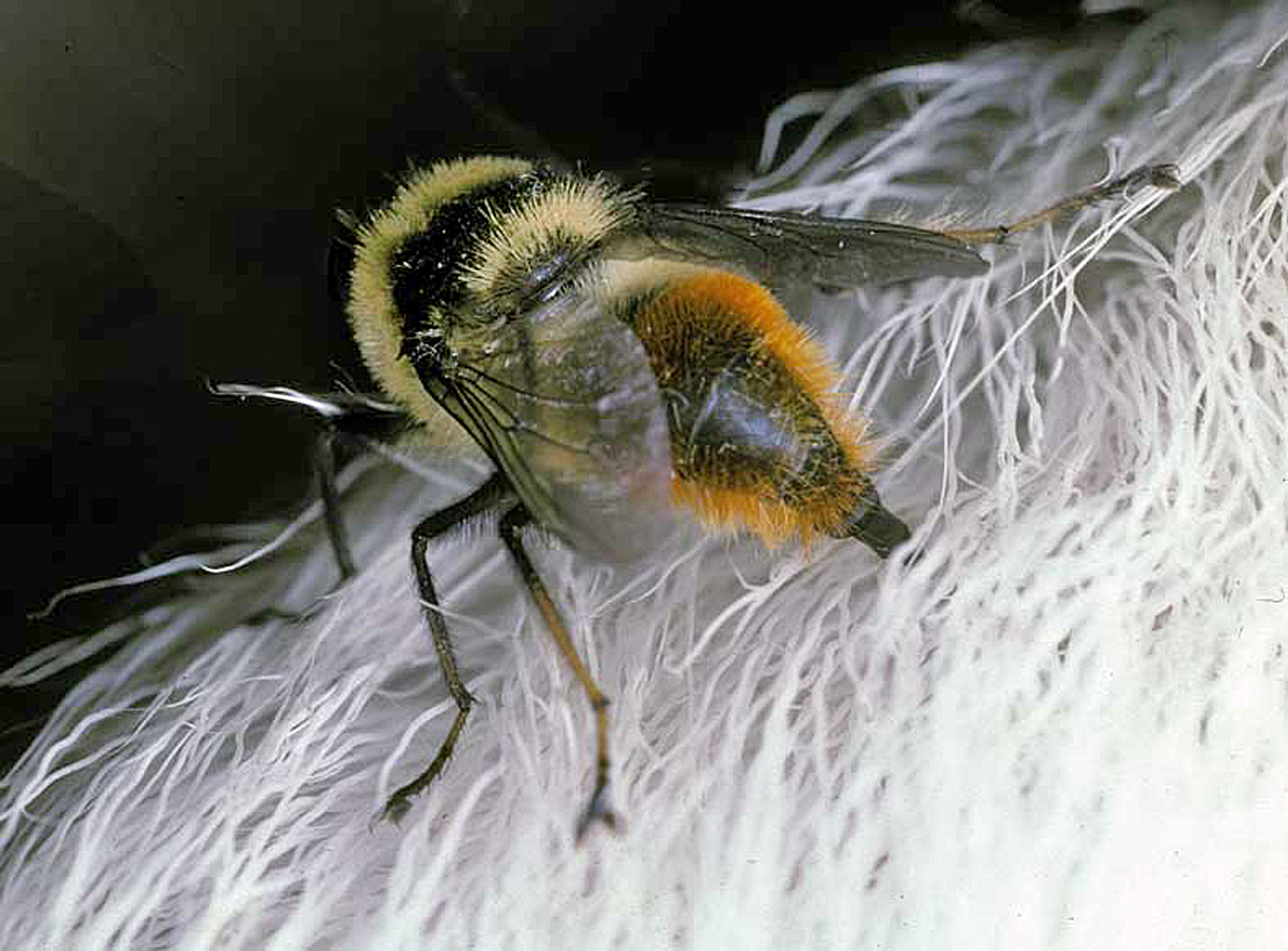Caribou Warble Fly, Hypoderma tarandi
In the southern Arctic, caribou often form herds of thousands. That adds up to a lot of flesh and blood, and a valuable food resource for the Inuit. But there are many other smaller hunters that also take advantage of this feast. One of these predators is an insect, which as an adult looks like a fuzzy, two-winged bee. This vicious hunter is the warble fly, Hypoderma tarandi, and the sound of their buzzing can cause a caribou to run in fear. The adults of this fly to do not directly harm the caribou, but their fear is justified, nonetheless! Warble flies dive bomb caribou, delivering a nasty package of eggs that stick to the hairs on the belly or legs.
The maggots that hatch out of these eggs bore into the caribou, and then tunnel their way through its flesh until they reach their destination, and lodge near the spine. Here, they carve a hole through the caribou’s back to reach the air. An anal breathing apparatus at the hind end is used to access the oxygen supply, while the maggot gorges face-first on the caribou’s flesh. After lying safe in its tunnel for the winter, the larva abandons its host through its porthole and drops to the ground where it metamorphoses inside a pupal case into an adult.
The pain that results from warble wounds is not the only disadvantage of a warble fly infection. With up to 2000 larvae developing in the back of a single caribou, the resulting weakened condition can lead to death – either from increased risk of predation, or from bacterial infections in the open wounds. On occasion, these parasites have been known to infest humans, in whom their journey under the skin leads to the scalp. As well as unpleasant thoughts, the resulting warble wounds can cause infection and hair loss.

